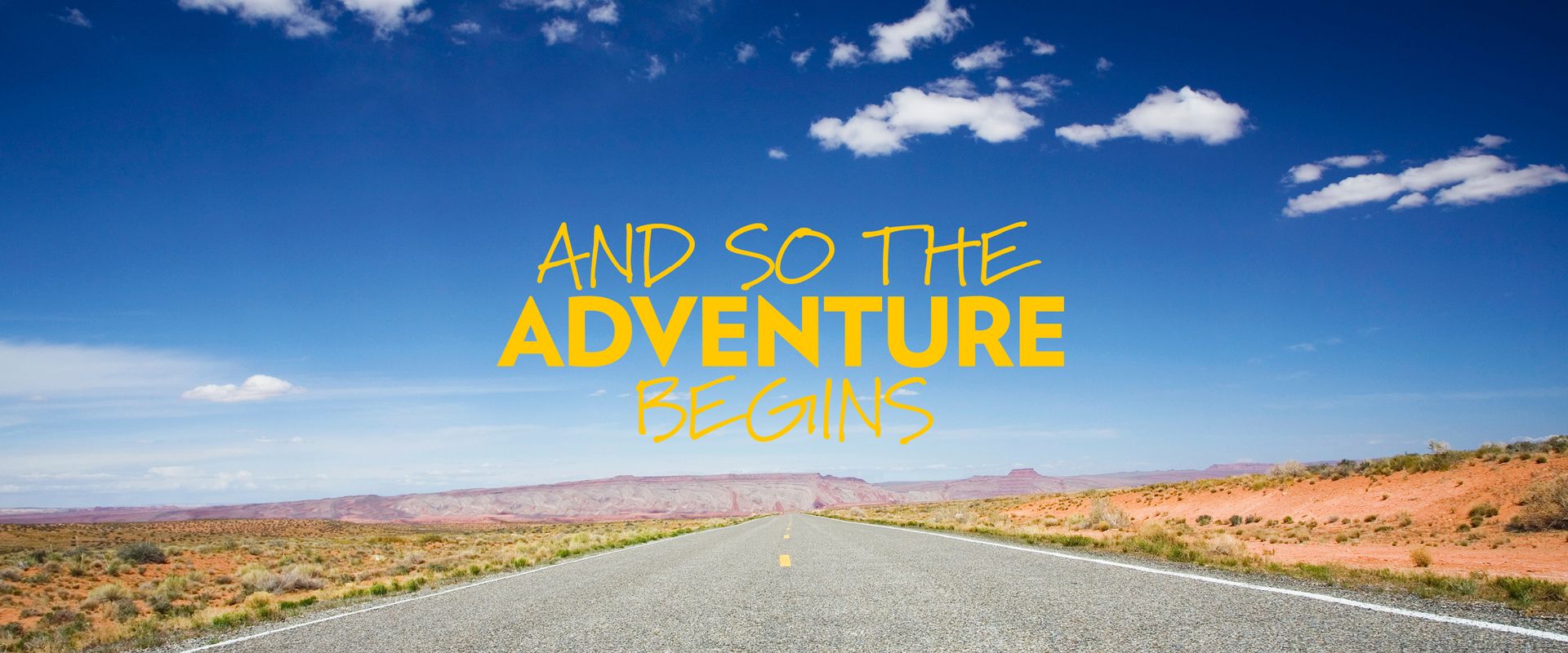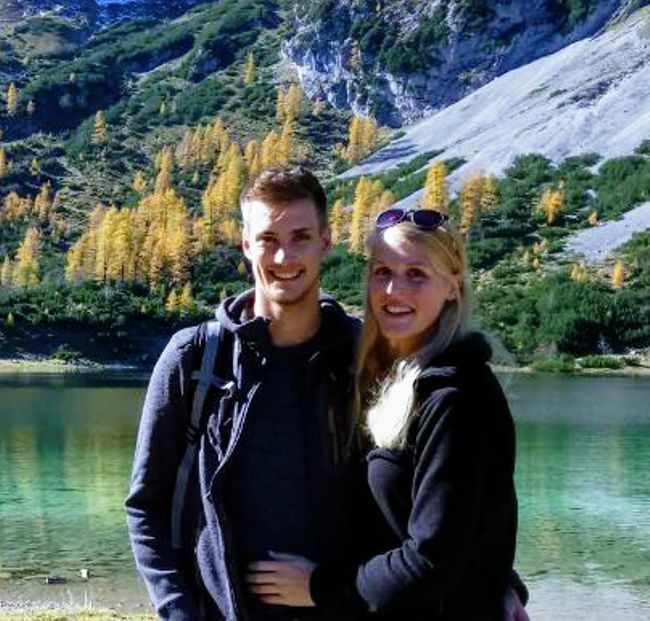Karajini National Park
Publikuar: 25.05.2018
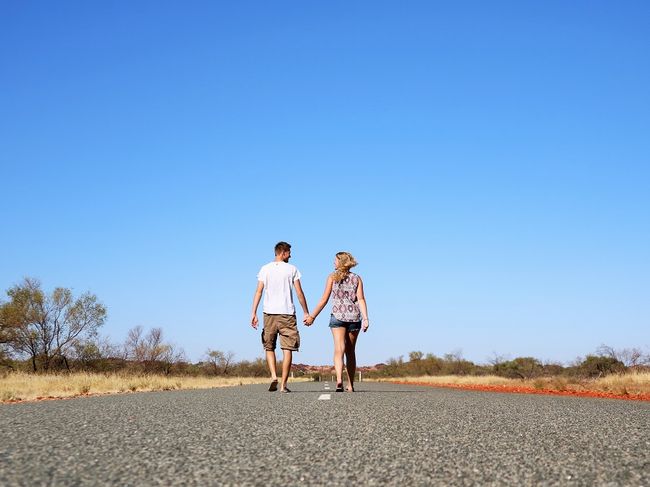
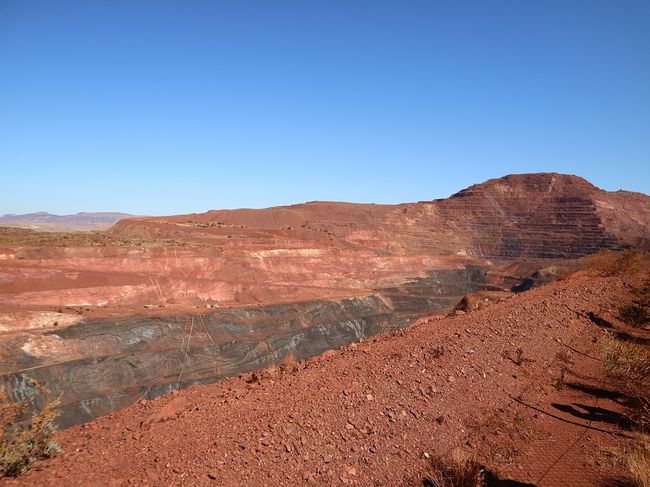
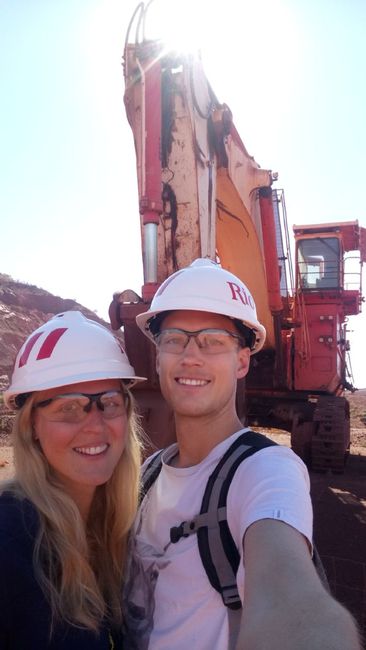
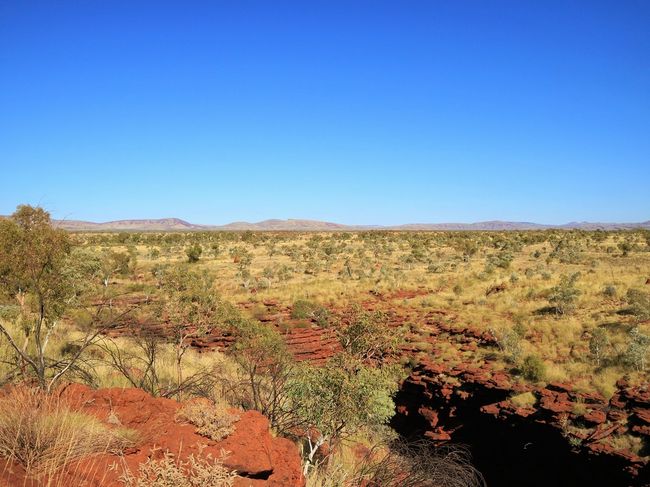
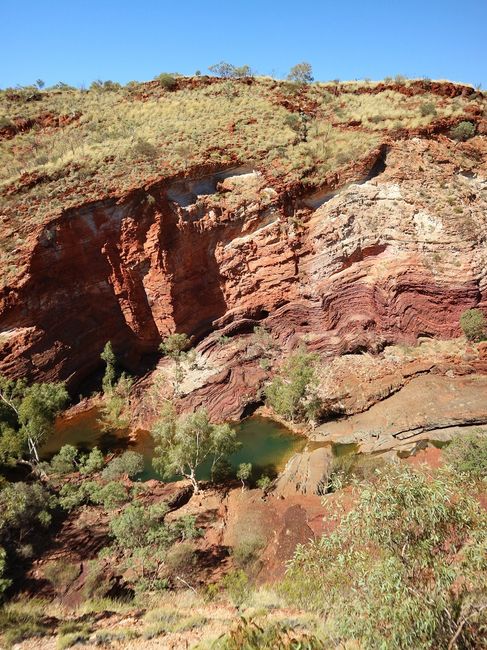
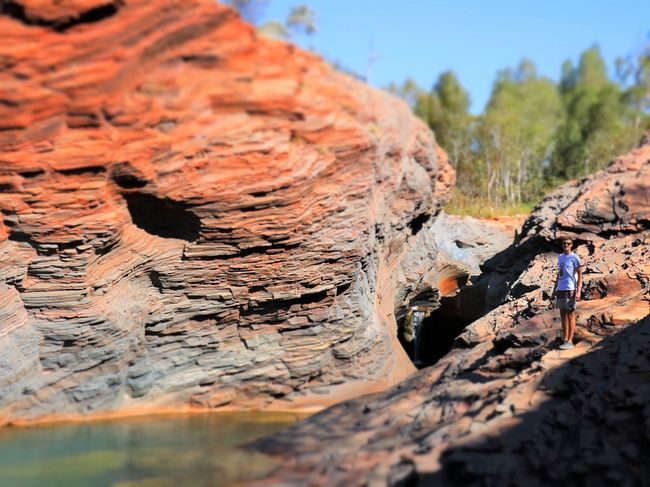
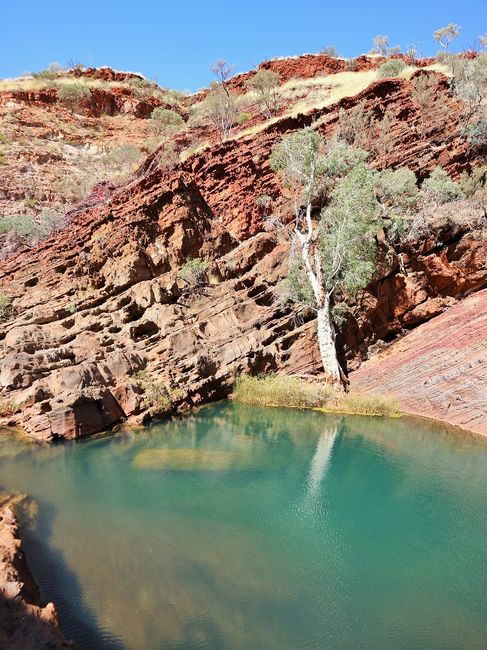
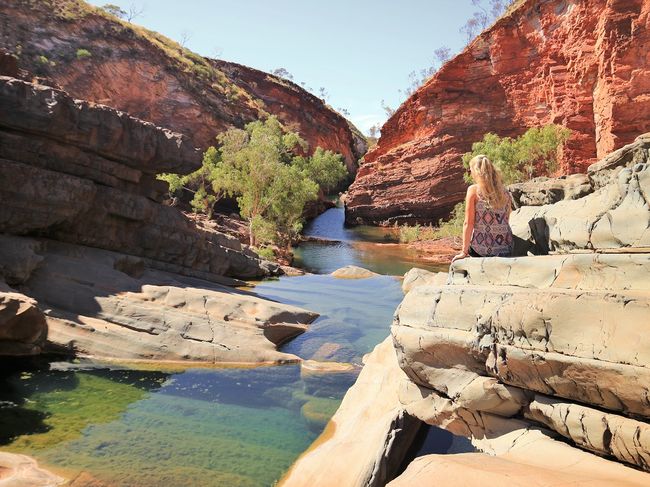
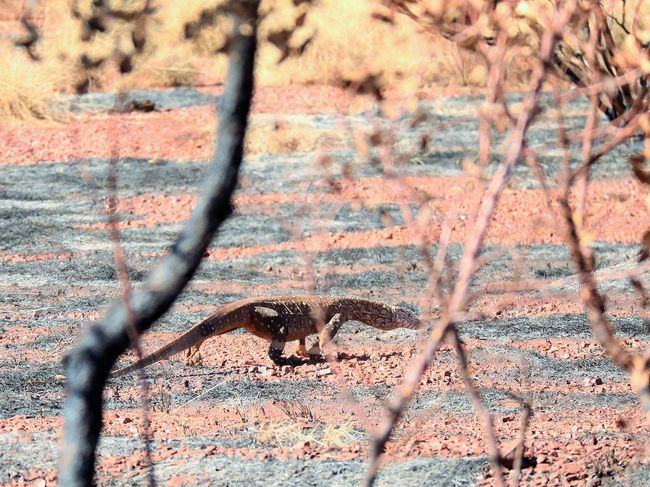
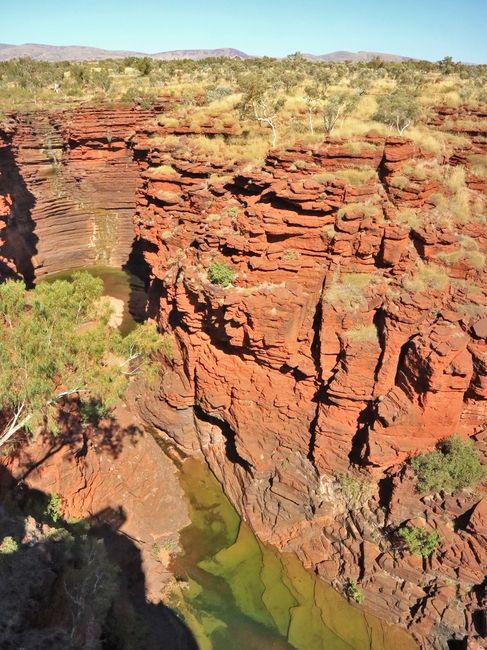
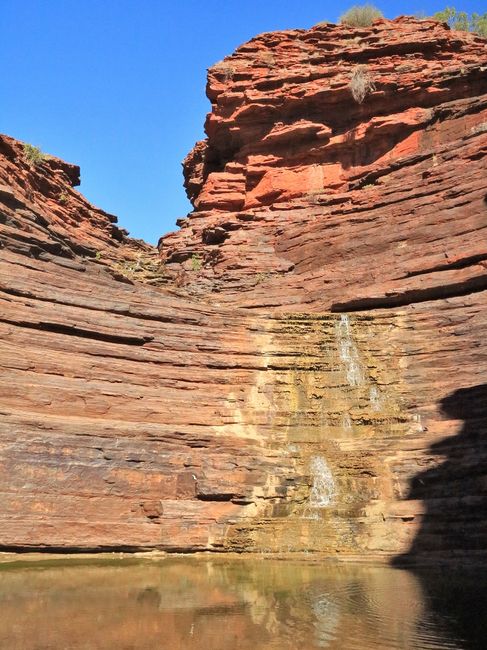
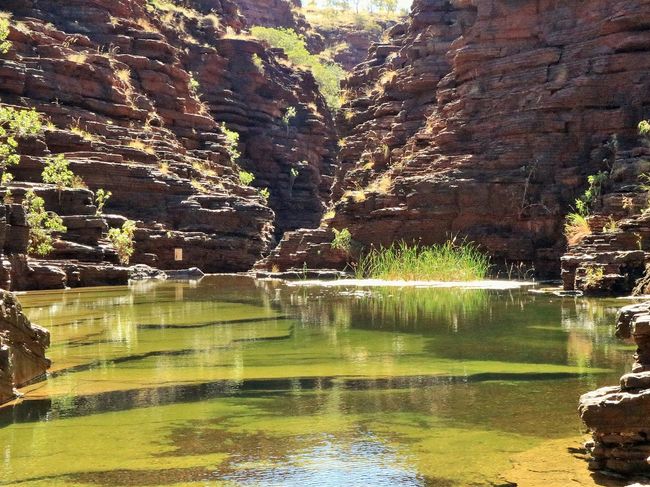
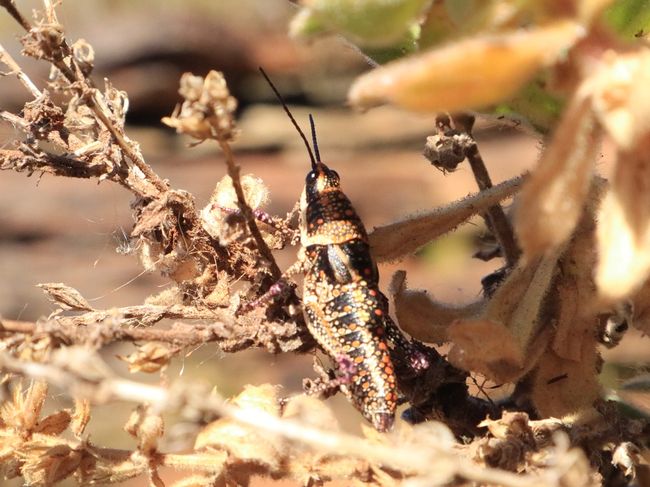
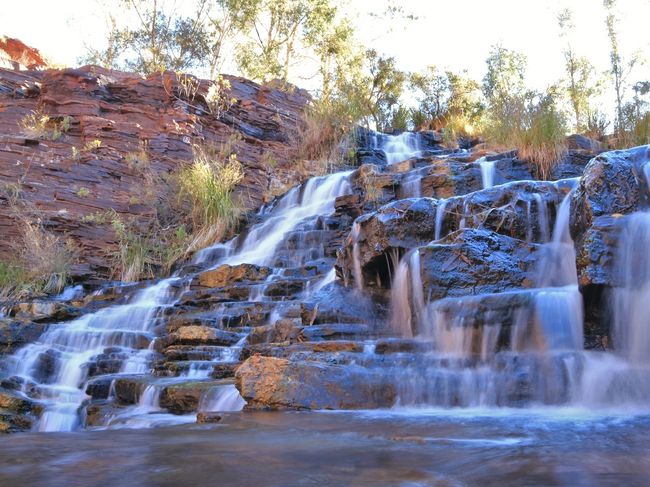
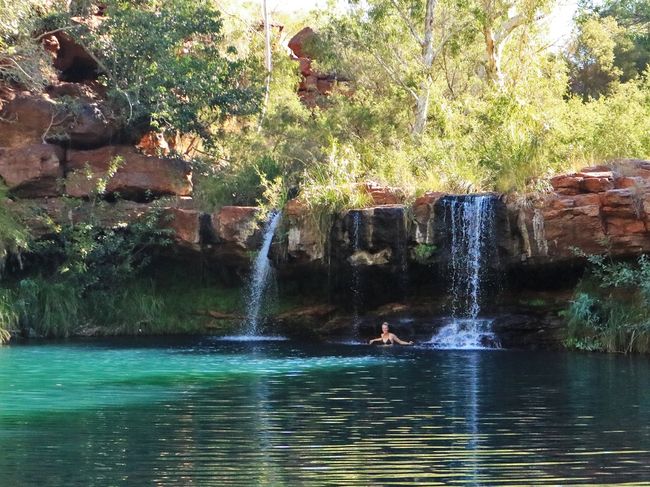
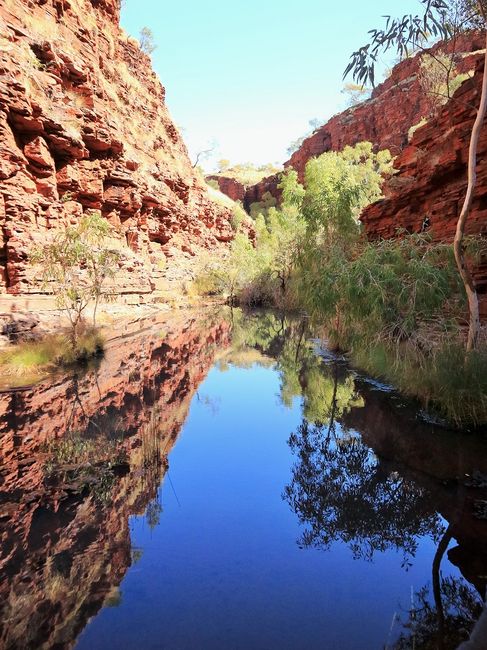
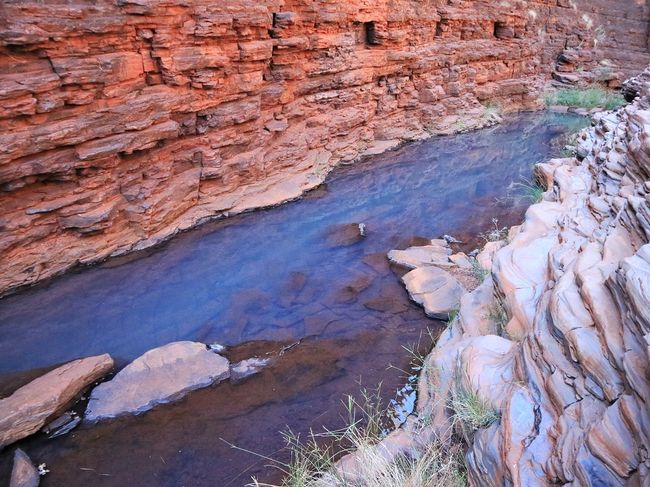
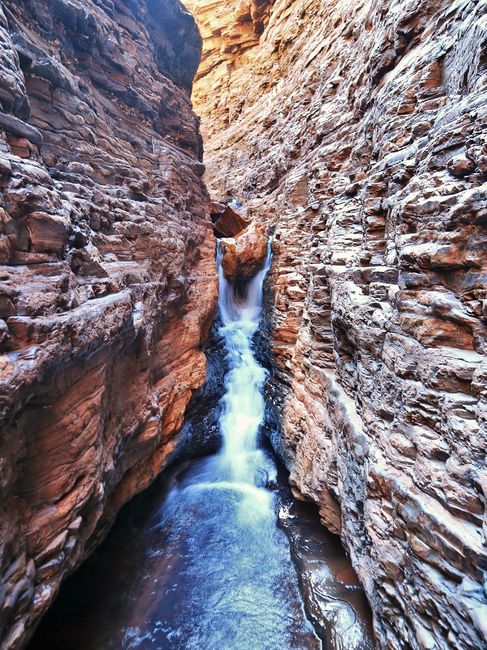
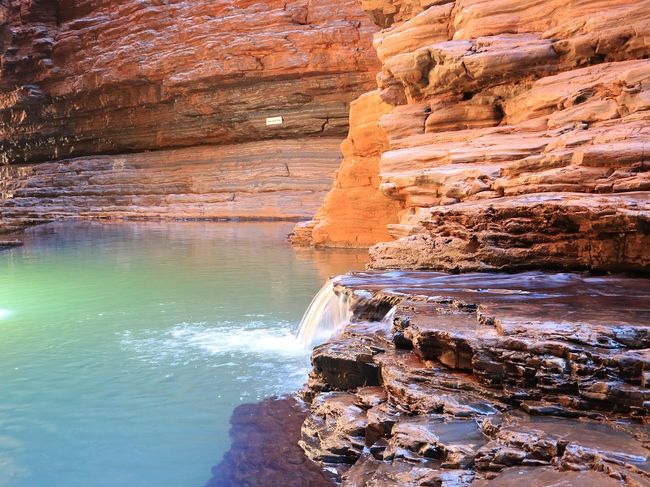
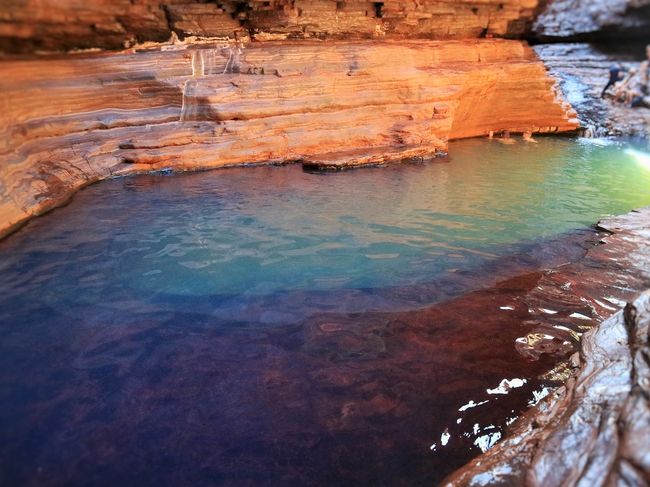
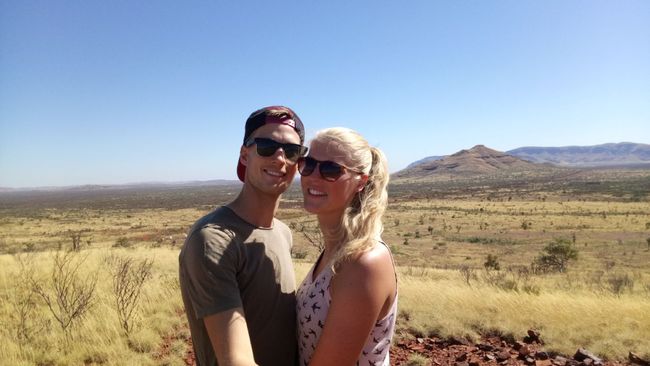
Regjistrohu në buletinin
The long journey from Exmouth via Paraburdoo and Tom Price to Karajini National Park was definitely worth it. Tom Price is the main town of the region, where you can stock up on groceries, fuel, and information before heading into the huge national park. The people who live here mostly work in the gigantic mine called Rio Tinto. It is the second largest mine in the world and the short tour we did here provided us with interesting information: iron ore mining since 1966, owned by Queen Elizabeth, the trucks are up to 16m high and can transport 140 tonnes, the trains that depart here 4-5 times a day are over 2.5km long and consist of 236 wagons, each train transports about 28,000 tonnes of iron ore...
Incredible numbers that make you marvel. We often saw a train, but were lucky not to have to wait for it to pass the boom gates, as that can take a while.
In the national park itself, we spent most of our time in the gorges. What nature has created here over millions of years is truly breathtaking. Red stone slabs rise on either side, the small streams make their way through the canyons, and there are small pools and waterfalls where you can swim. It's a real adventure to hike through here. Sometimes you have to climb along the cliffs, sometimes cross the stream, or even splash through it. The water is quite fresh but also a welcome relief. Depending on the sunlight, it shimmers in shades of green or turquoise-blue.
Originally, we planned to start our journey back to Perth after three days, but our car had some problems. So we spent a fourth day in the national park and enjoyed the view from Mount Bruce. When our car was fixed, we set off and tried to make up for lost time. Initially, we planned to drive along the coast back to Perth, but now we decided to take the direct route through the interior of the country. This way, we have a few more days to explore some highlights south of Perth.
For us, Karajini was the most beautiful national park so far. In addition, you get a good outback feeling here when you camp at the free campsites. No toilets, no water, nothing. You have to organize yourself well because the nearest pit toilet is often several kilometers away. Yes, flushing toilets are really rare here. Water is scarce, so there are hardly any sinks in the sanitary facilities.
In general, the distances from A to B are extremely long and seem endless because of the straight roads. Here you mainly encounter the famous road trains, over 50m long trucks. What we found funny: in Germany, there are warning signs for wildlife crossing, for example, for the next 10km. In Australia, they also exist, but they warn for kangaroos. However, for the next 420km!!! Crazy, right?
Now we're heading back to Perth, about 1,450km, to explore the southwest from there.
Regjistrohu në buletinin
Përgjigju
